Covid-19 and a “SAFE” farm- are there similarities?
July 3, 2020
Regina McBennett CAFRE, Agri-environment adviser, Armagh
One by-product of the Covid-19 pandemic is that we have never had so many public health messages.
When one looks at two of the groups impacted by COVID-19 during the past three months the parallels with farm safety are similar. The over 70s were one of the groups most in danger, and young children are severely impacted by both Covid-19 and by potential dangers in the working environment that is any farmyard across the country.
At this time of year work activity on farms is largely dominated by the trinity of S- Silage, Slurry and Spraying and the key messages around farm safety are critical. Farmers are familiar with the overarching safety messages and the term “SAFE”, which stands for Slurry, Animals, Falls and Equipment, should be at the front of our minds when we reflect on a day’s work done and plan for tomorrow. In the helter skelter of the summer season in farming the time given to such reflection is more important than ever.
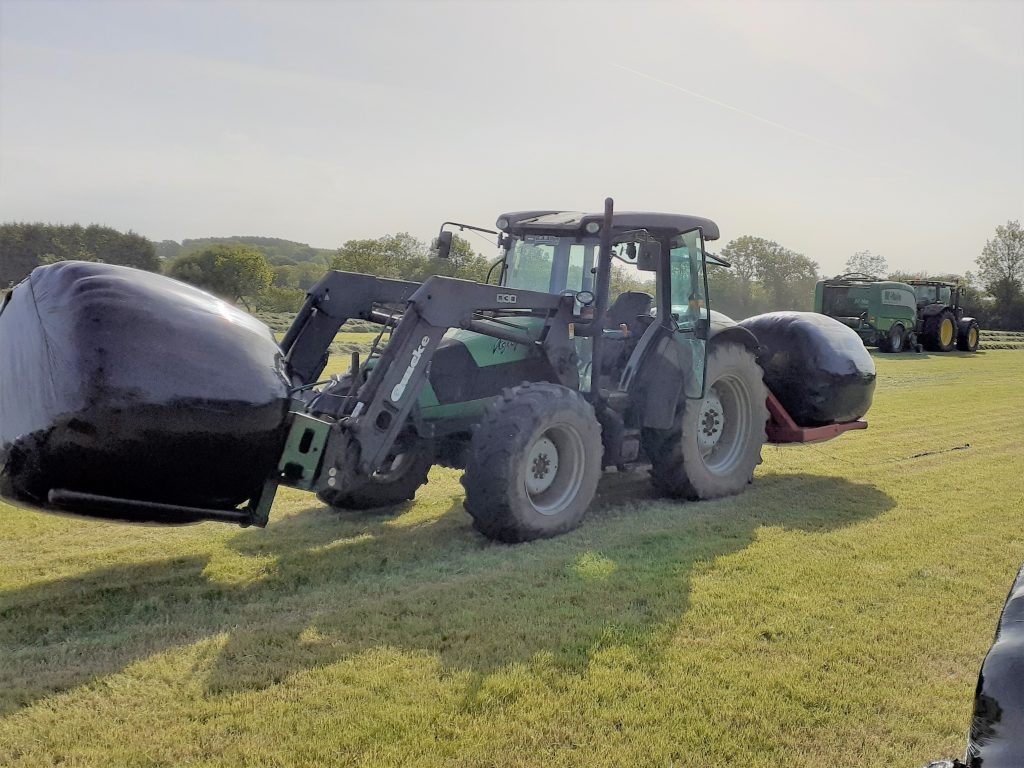
Farmers, to their credit, are more safety conscious and vigilant now than ever before but, as with many life lessons this education has come the hard way through the loss of family, friends and neighbours. The catalogue of farm accidents still remains too high despite a greater awareness and an undoubted willingness to implement best practice. It is space between the will to act with safety in mind, and the rush to complete tasks, that lies the risk taking and momentary lapses in concentration that lead to severe injury and death on our farms.
Farms present unique environments where work and ordinary home life can merge and complacency can set in. Farms are intergenerational by their nature. Farming methods and work practices are handed down from generation to generation by those who live, work and learn side by side. Each generation can teach and learn from those they work with, presenting both a risk and an opportunity.
Slurry
Huge progress has been made in the area of educating farmers around employing safe systems of working during agitation. A lot has been done but the message cannot grow old. All buildings should have maximum ventilation and all livestock and pets should be removed before mixing starts. Openings in tanks should be minimised and covered where necessary to avoid falls into underground tanks. Once machinery has been started all operators must stay out for a minimum of 30 minutes.
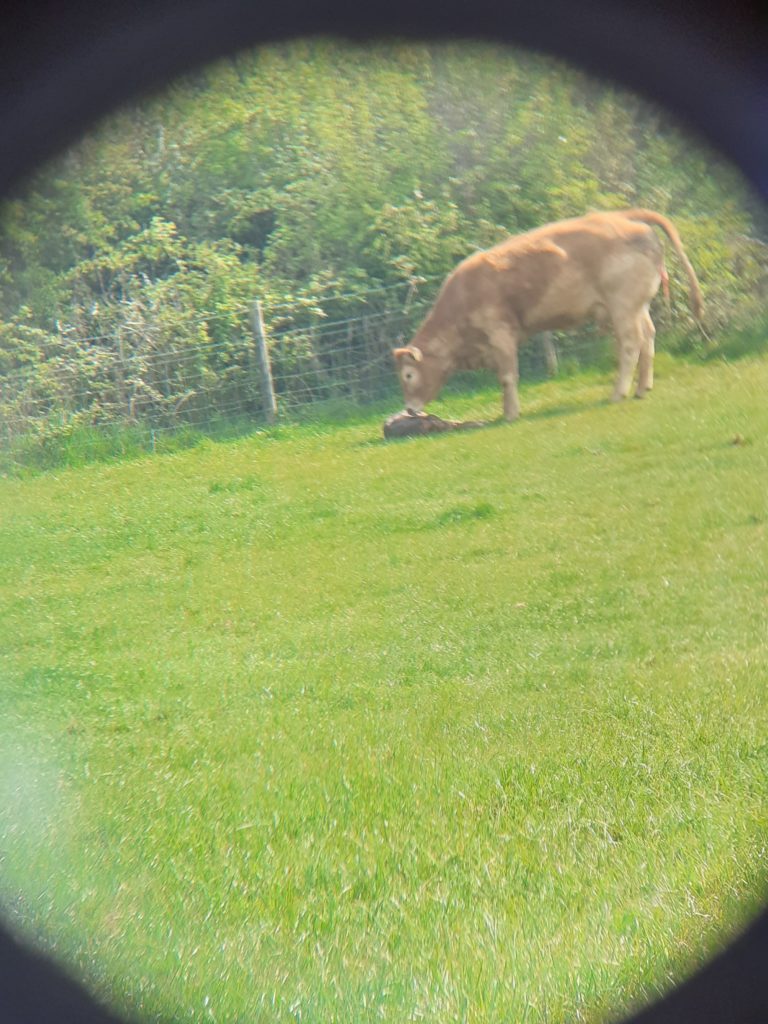
Animals
The calving season presents its own difficulties and while this has largely passed, the breeding season should give all farms pause for thought at present. Each and every farmer is asked to be acutely conscious of those animals from passive to aggressive during this breeding season, this includes both cows and bulls. Farmers are asked to make this the first element of their daily herd check- where is the bull located in the field? What traits is he showing at this time and what levels of aggression are detectable? Where is my planned escape route if needed? – if not checking stock from within a vehicle. What areas provide me with cover, safe passage or a resting place should circumstances require it?
Falls
No farm environment can be risk free, but, risk must be managed and minimised. Roofs, ladders, loaders and lofts were for many years a byword for risk most notably for the older generation and the exuberance of youth. Farmers must stretch themselves in preparation to create safe areas rather than overstretch from heights and footholds that can lead to disaster. Gates must be secure, slurry lagoons sealed, gantry guide rails installed and trap zones identified.
Equipment
Farm machinery today is bigger, faster, and more powerful than ever before. Speed is of the essence and yet all these advances designed to make the process faster and the workload easier all come with inherent risk. Consider simple things, the servicing of equipment, the speed of the power take off (PTO) shaft, the convenience of the farm quad, the horsepower of the machine and you soon realise that when combined with tiredness or lack of due diligence on the part of the farmer or contractor they form a deadly combination which can cost both life and limb. We are again called on to ask ourselves the same key questions to protect us and our loved ones- Have I assessed the risk involved? Am I operating in an instinctive culture of safety? Is my clothing likely to catch in rotating shafts or blades? Have I placed those in my supervision in a secure environment within the tractor or indeed should they be there at all? Is my concentration on the equipment diluted through the use of mobile phones or the use of social media?
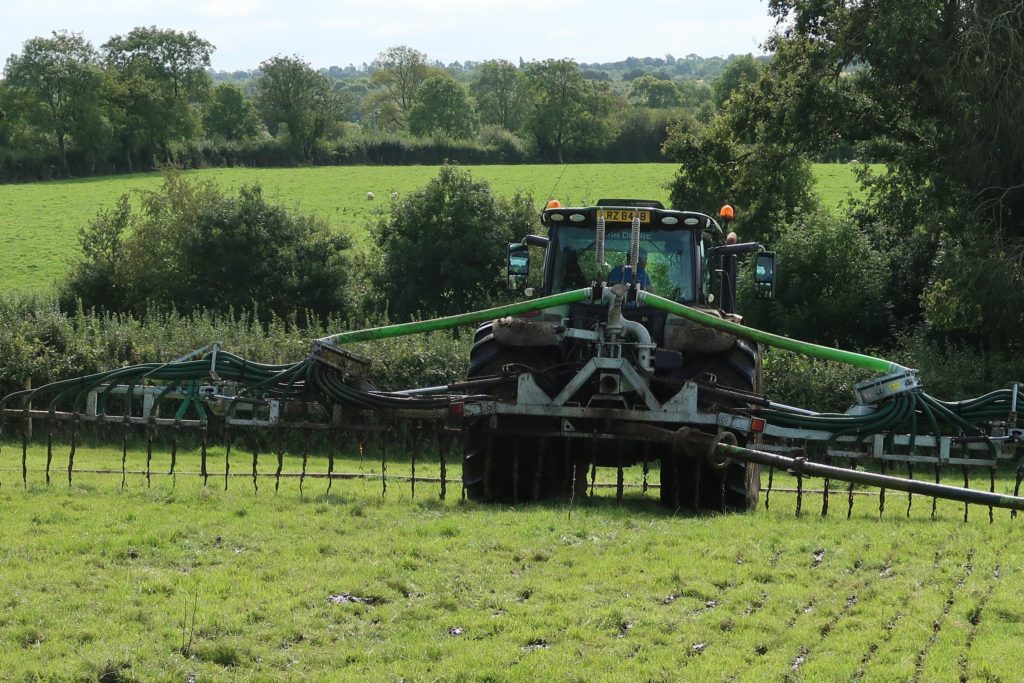
Analysis of the statistics relating to farm accidents show a positive trend from a grim baseline.
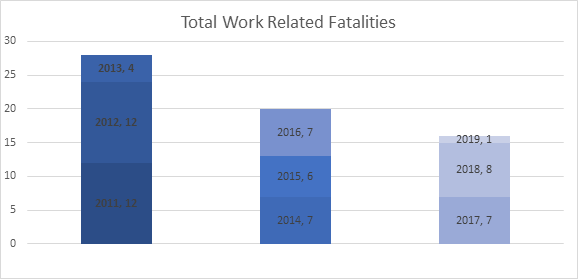
Over a three year period from 2017-2019 inclusive 16 fatalities were recorded on farms. Sixteen lives lost and families devastated. While the figure is down from the twenty deaths recorded in the period 2014-16 and 28 in the period from 2011-13 each and every live lost is undoubtedly one too many and accepted as such.
The farming community knows all too well the impact of lapses in concentration regarding (SAFE) slurry, animals, falls and equipment Statistics in the past 5 years show equipment and animals have caused most fatalities but in the past 10 years it has been equipment and falls which have caused most fatalities. However it should be noted that all items present great risks, equipment causes most fatalities.
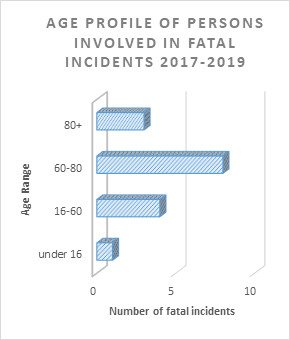
The inter generational aspect of farming shows us all the need to protect the most vulnerable. The elderly can become complacent through time especially the more often they complete a routine task.The young blend exuberance and naivety despite undoubted agility. Together they can and will learn from each other. The average age of farmers across Northern Ireland is 59, but the majority of fatal farm accidents involved those over that age.
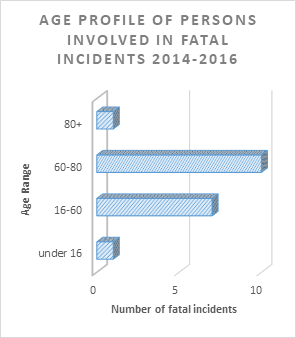
While death is the ultimate tragedy for a farming family, one in every 20 farms have a workplace related incident requiring medical attention each year and of these one in five required hospital admission.
The cancellation of key farming interaction and social outlets such as Balmoral and local shows may have reduced the opportunity this year to reinforce key safety information, education and enforcement messages, but the message has not changed. The sharing of irresponsible social media posts promoting unsafe practices should serve to strengthen the resolve for a safe farm culture.
A further lesson from the Covid-19 experience is the sense of personal responsibility for hand sanitisation and hygiene that has now become accepted practice and is second nature to all. Getting our behaviour to mimic our understanding of best practice is now engrained. The challenge will be to replicate that in a working farm environment. We not only can but must assess the risk, create the environment that minimises risk and train everyone to implement the best safety procedures we can.
In doing so we will indeed stay SAFE stay alert and stay alive.
